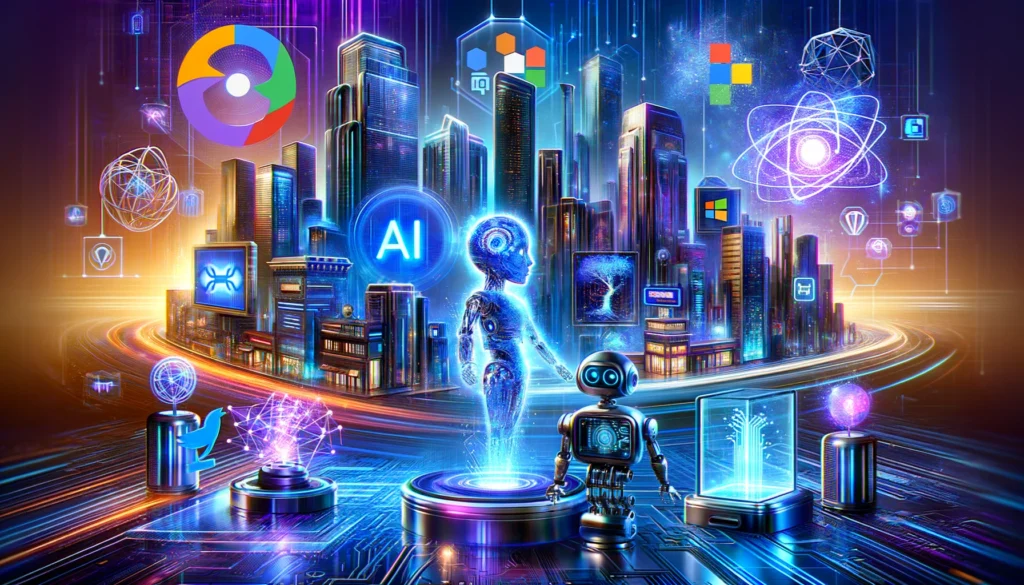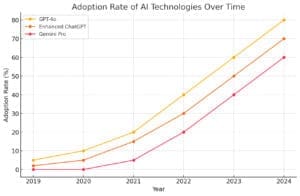AI Advancements Your Business Can’t Afford to Miss in 2024

Artificial Intelligence is no longer a distant dream; it’s rapidly becoming a transformative force in our everyday lives. The pace of AI technology development is nothing short of breathtaking, with innovations emerging at a speed that continuously pushes the boundaries of what we once thought possible. This relentless march of progress signifies a seismic shift toward the integration of increasingly sophisticated and versatile AI models across a multitude of sectors. From healthcare and finance to entertainment and education, AI is poised to revolutionize the way we live and work.
Leading the charge in this AI revolution are tech giants like OpenAI, Google, Meta, Microsoft, and Amazon. These industry behemoths are locked in a high-stakes race, each striving to outdo the other by unveiling groundbreaking technologies designed for specific, impactful applications. OpenAI’s GPT-4o, Google’s advancements at I/O 2024, Meta’s cutting-edge language models, Microsoft’s Frontier developments, and Amazon’s enterprise solutions are just a few examples of how these companies are pushing the envelope.
The competition among these powerhouses is fierce, driving an unprecedented era of innovation. Each new development not only showcases the potential of AI but also highlights the diverse ways it can be applied to solve real-world problems. As these technologies continue to evolve, they promise to bring about significant changes, enhancing efficiency, creativity, and data-driven decision-making across industries. The future of AI is bright, and the possibilities are limitless, heralding a new era of technological advancement that will reshape our world in unimaginable ways.
GPT-4o Sets a New Standard for AI Versatility
OpenAI’s latest marvel, GPT-4o, can handle text, audio, and video inputs and outputs. This is a massive leap in AI’s versatility and multi-modality. Picture this: streamlined complex workflows in marketing, content creation, and data processing, transforming industries that rely heavily on multimedia formats.
- Prediction: GPT-4o is set to catalyze a shift toward unified AI platforms, cutting down the need for multiple specialized tools for different tasks. Expect it to become a staple in digital marketing, media, and customer service sectors within the next year.
Transforming Business with ChatGPT’s Data Analysis Features
The enhanced data analysis capabilities of ChatGPT are set to revolutionize enterprise efficiency. Features like file uploads from Google Drive and Microsoft OneDrive, interactive tables and charts, and customizable download options provide a significant boost to data management and presentation.
- Prediction: These improvements will make ChatGPT indispensable for businesses aiming to streamline their data workflows. Adoption rates among corporate users are poised to surge, particularly in data-heavy industries like finance and market research.
The Cutting-Edge AI Innovations at Google I/O 2024
Google I/O 2024 was a spectacle of AI advancements in information organization and context management. With long context management through Gemini Pro and experimental apps like NotebookLM and AI Studio, Google is zeroing in on enhancing user experience and equipping researchers and analysts with robust tools.
- Prediction: Google’s strides will cement its position as a leader in integrated AI solutions. The introduction of 1 million token context management could revolutionize research methodologies, making Google Workspace an indispensable tool in academic and professional circles.
| AI Technology | Company | Key Features | Predicted Impact |
|---|---|---|---|
| GPT-4o | OpenAI | Handles text, audio, and video inputs and outputs | Streamlines workflows in marketing, content creation, and data processing |
| Enhanced ChatGPT | OpenAI | Data analysis with file uploads, interactive tables | Boosts enterprise efficiency in data management |
| Gemini Pro | Long context management | Revolutionizes research methodologies | |
| Figure 1 Robot | OpenAI | Integrates GPT-4 for automated workflows | Advances AI-assisted programming |
| Llama 3 | Meta AI | Next-gen large language model | Competes with top AI models |
| Q for Enterprises | Amazon | Specialized solutions for complex business needs | Pivotal tool for large-scale enterprise applications |
- OpenAI‘s Figure 1 robot, integrating GPT-4, and the preview of Devin as a new AI software engineer mark significant progress in automated workflows and AI-assisted programming.
- Meta AI‘s release of Llama 3 and Microsoft’s work on the Frontier model LLM named MAI-1 highlight the ongoing race to develop cutting-edge large language models, each striving to outshine the competition.
- Amazon’s Q for enterprises is on track to become a pivotal tool for large-scale enterprise applications, offering specialized solutions tailored to complex business needs.
Overcoming AI Challenges and Criticism
Despite these advancements, the negative reviews of AI-enabled hardware like the Humane Pin and Rabbit R1 highlight the ongoing challenges in merging software sophistication with hardware reliability.
| Issue | Affected Technology | Description | Potential Solutions |
|---|---|---|---|
| Hardware Reliability | Humane Pin, Rabbit R1 | Poor reviews due to hardware-software integration | Improved hardware design and testing |
| Data Privacy | Various AI models | Concerns over data handling and privacy | Enhanced data protection protocols |
| Accessibility | High-end AI Solutions | High costs limiting access for smaller enterprises | Development of affordable AI solutions |
The Future of AI: Gaining the Competitive Edge
The AI innovation landscape is fiercely competitive, with each major player pushing the envelope of what AI can achieve. This rapid technological advancement increases accessibility for end-users across various domains. However, as AI technology becomes more deeply embedded in daily operations, the lagging reliability of hardware underscores the need for holistic improvements beyond just software capabilities.
These developments hint at a future where AI’s integration into professional and personal spheres is seamless, fostering environments that are significantly more efficient, creative, and data-driven. The relentless efforts and innovations of these tech giants will pave the way for widespread AI adoption, revolutionizing traditional workflows and creating new opportunities for growth and analysis.



